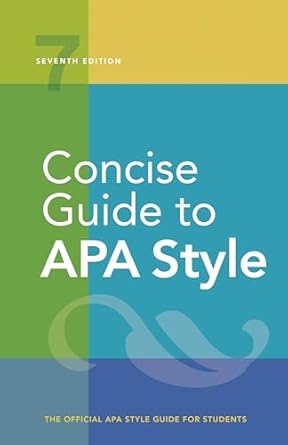[toc]
scholarly writing clarity conciseness tips
Concise Guide to APA Style: 7th Edition (OFFICIAL)
Page 59 Review
Effective Scholarly Writing: A Deep Dive into Clarity and Conciseness
In the realm of academic writing, clarity and conciseness reign supreme.
As the excerpt from “Effective Scholarly Writing” highlights, the ability to communicate ideas effectively and efficiently is paramount to academic success.
Let’s delve deeper into the key concepts presented in this insightful piece.
The Peril of Noun Strings
The excerpt begins by addressing a common pitfall in scholarly writing: noun strings. “Noun strings, meaning several nouns placed one after another to modify a final noun, can confuse readers and force them to question how the words relate to one another.” These strings, often intended to be descriptive, can become unwieldy and obscure the intended meaning.
The text wisely suggests untangling these strings to improve readability. “Although skillful hyphenation can clarify the relationships between words, often the best option is to untangle the string.
One approach to untangling is to move the final noun earlier in the string and show relationships between the other nouns by using verbs and prepositions.” This approach involves restructuring the sentence to clarify the relationships between the nouns, using verbs and prepositions to establish connections.
For example, the text provides a compelling illustration: “‘culturally sensitive qualitative interview techniques’ can be rearranged to ‘culturally sensitive techniques for qualitative interviews.’” This simple rearrangement significantly enhances clarity by making the relationship between the nouns more explicit.
The text then presents further examples:
- Noun string: skinfold test body fat percentage
- Better sentence structure:
- a caliper examination to determine body fat percentage
- examination of a skinfold test to determine body fat percentage
- determination of body fat percentage using calipers to measure skinfold thickness
- Noun string: preliminary online collegiate instructional methods survey results
- Better sentence structure: preliminary results of an online survey to assess college students’ preferred instructional methods
These examples powerfully demonstrate how untangling noun strings can drastically improve the clarity and readability of academic writing.
By consciously restructuring sentences, writers can eliminate ambiguity and ensure that their message is conveyed effectively.
Conciseness and Clarity: The Cornerstones of Effective Writing
The second major theme explored in the excerpt is the importance of conciseness and clarity. “Say only what needs to be said in your writing: The writer who is more concise—that is, more frugal with words—writes a more readable paper.
Students increase their chances of academic success when they write concisely.
Likewise, writing that is precise and clear is more accurate and transparent.
Together, conciseness and clarity in your writing ensure that readers understand your meaning.”
This section emphasizes that effective writing is not about filling pages with unnecessary words; it’s about communicating ideas in the most direct and efficient manner possible.
Conciseness enhances readability, allowing readers to grasp the main points without wading through unnecessary verbiage.
Clarity, on the other hand, ensures that the message is unambiguous and easily understood.
The excerpt astutely addresses a common concern among writers: the fear that conciseness will make their papers too short. “Some writers may fear that writing concisely will make their papers too short.
However, adding extraneous material or ‘fluff’ to make your paper longer will dilute its focus and meaning and will not improve your chances of getting a favorable grade.
If your paper is too short when written concisely, your ideas and themes may need to be further developed to add substance.” This highlights the crucial distinction between conciseness and a lack of substance.
If a paper is too short, the solution is not to add fluff but to further develop the core ideas and arguments.
Practical Tips for Achieving Conciseness
The excerpt concludes with practical advice on how to achieve conciseness in writing. “Where possible, tighten language to eliminate wordiness, redundancy (see Section 2.5), evasiveness, overuse of the passive voice, circumlocution, and clumsy prose.
Shorten or eliminate overly detailed descriptions of equipment or apparatuses, participants, or procedures; elaborations of the obvious; and irrelevant observations or asides.” This comprehensive list provides a roadmap for writers seeking to refine their prose.
By actively identifying and eliminating these common pitfalls, writers can significantly improve the conciseness and clarity of their work.
In conclusion, the excerpt from “Effective Scholarly Writing” offers invaluable insights into the art of clear and concise academic writing.
By understanding the dangers of noun strings and embracing the principles of conciseness and clarity, writers can significantly enhance the effectiveness of their communication and increase their chances of academic success.
The advice offered serves as a practical guide for writers at all levels, empowering them to craft prose that is both informative and engaging.
Buy full ebook for only $18: https://www.lulu.com/shop/american-psychological-association/concise-guide-to-apa-style-7th-edition-official/ebook/product-rmzpq54.html?page=1&pageSize=4
Scholarly Writing Clarity Conciseness Tips
Read more: Unveiling Mystery: Commentary


Leave a Reply